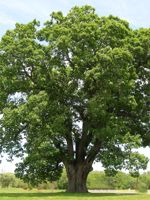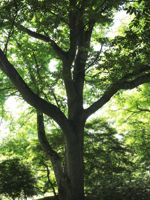Mon-Fri 9am - 5pm Mountain time
White Oak vs Manchurian Walnut
Quercus alba
Juglans mandshurica
NOT AVAILABLE THIS SEASON - MIGHT RETURN
White Oak is large, long-lived tree with an irregular trunk divided into spreading, often horizontal, stout branches. A highly adaptable tree, White Oak features green acorns and beautiful green leaves that turn red-purple in the fall.
With a huge growth in bourbon and scotch over the past few decades there is an emerging shortage of white oak that is the primary tree used for cask barrels and aging.
Note: Most Oak species can be considered toxic for many animals.
Manchurian Walnut is a large, broad and often multi-stemmed tree with ornamental qualities. This tree produces large, thick-shelled nuts that ripen in the fall. These edible walnuts are reportedly difficult to crack open. They are useful for attracting wildlife, especially squirrels.
The Manchurian Walnut contains and exudes much lesser quantities of allelopathic compounds, such as juglone (common to walnuts), that may prevent or impair growth of nearby plants. Therefore, it is commonly embraced as a safe walnut to plant.
There are reports of rare this species surviving winters to -45C with specimens growing and thriving in Alaska and Edmonton.
There is no regular supply of this species. It is rare and not produced each year.

